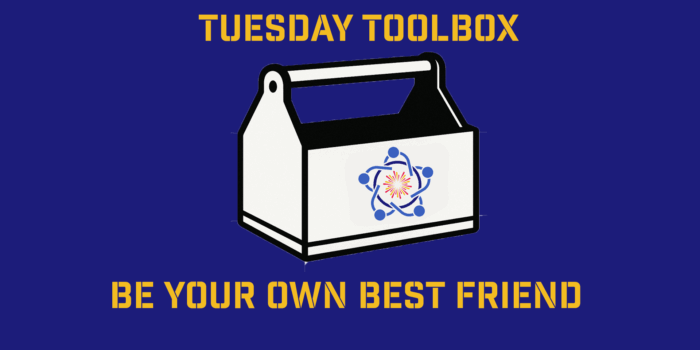Most of us want to turn and run from these kinds of decisions. Leaps of faith make great scenes in a movie, but in real life they fill us with stress and uncertainty, two emotions that are not comfortable for the human brain. In fact, according to researchers, our brain actively strives to reduce uncertainty about future outcomes in order to escape those feelings of discomfort and stress.
The big, complex decisions we face are the ones most impactful on our lives and our future, and they’re often the decisions we’re most proud of. Recently, I taught a business school class in decision-making in Portugal, and I asked students to share the best decision they had ever made. Again and again, they pointed to those big, complex decisions such as “Buying my first house,” “Saying yes to a job,” “Getting a divorce,” “Living alone,” and “Traveling solo.”
The students’ responses mirrored what I’ve heard from corporate clients, who’ve shared that their best decisions include “Taking risks and following my passion,” “Getting married,” and “Deciding to have my son.”
If uncertainty makes us so uneasy, why do so many of us look back fondly on bold decisions? And how can we become more comfortable making them?
To face down the discomfort of a leap-of-faith decision, we can take advantage of a revealing data set that we often ignore: our past decisions. Every choice we’ve made offers information that can inform our future decisions. Looking back at our decision-making history allows us to see patterns that we might not otherwise notice — thus providing a crucial perspective for understanding (and solving!) complex and unique current and future problems.
To help you mine your personal decision-making data set, I’ve developed a planning tool that I call the Bold Decision Barometer (BDB). It offers a series of steps to identify and examine variables from previous decisions so that you can reduce uncertainty and increase your comfort making the next big leap of faith.
1. Identify the decision you need to make.
When we’re trying to solve a thorny problem, we often have to sort through a lot of conflicting information. So the first thing to do is to identify what decision you need to make.
Rhianna, the CEO of an international travel company, was facing a tough call: Should she update and reorganize her board of directors — the entity she reports to and the group that could fire her? She’d inherited the current board from her predecessor, and they had been a great team when she was just getting started and needed a supportive care-taker board. But in her first two years at the helm, Rhianna had expanded the company’s international operations, and she now needed a team that could enhance a growing, dynamic organization, bringing skills and knowledge that the current board didn’t have. On the other hand, she worried that proposing this to the current board could be a quick trip to a forced resignation.
Of course, Rhianna had the option to keep the board as is, but not acting would be its own decision, with consequences. By assessing the implications of being cautious, rather than bold, you may assist your willingness to be bold.
2. Examine your past bold decisions.
Think about a previous choice you made where you were excited by the outcome. What decisions were before you? What actions did you take related to those decisions?
Rhianna reviewed her tenure and identified two bold changes that she had made to the organization: She had removed someone on her senior leadership team, and she had converted a for-profit part of the organization into a nonprofit.
Looking back, Rhianna reviewed the steps she had taken prior to making each decision. In the case of the senior team manager, she had heard hints of problems and suspected they stemmed from this person’s leadership. But she knew she needed to test her assumptions against evidence, so she conducted a financial review of the manager’s unit and spoke with key lieutenants about their oversight. When it came to making a decision about the business unit conversion, Rhianna recognized that she didn’t have the experience she needed with nonprofits. So she met with fundraisers, lawyers, and other experts to get herself up to speed.
3. Ask yourself what attributes or similarities are shared between the bold decision you are considering and your prior decisions.
Looking for similarities allows us to spot patterns that provide a sense of order in what might otherwise appear unique or chaotic. In addition, by identifying and understanding recurring commonalities, we can better make educated guesses or assumptions that allow us to formulate hypotheses. This helps us not only develop our critical-thinking and problem-solving skills, it also provides a familiarity that bolsters our confidence to do something new or bold.
Rhianna noticed that in making the prior two decisions, she reached out to people with specialized knowledge. She also realized that she had spent time imagining the possibilities of what the organization would look like after her bold decisions were made. For example, she envisioned how making the change on her senior leadership team might introduce some short-term volatility, but in the long term, it would demonstrate her commitment to improving the organization’s culture. Finally, she recognized that in both of her prior decisions, she was willing to incur some short-term personal and professional instability in exchange for a long-term benefit for everyone.
4. Consider whether there are attributes of your past bold decisions that might impede your ability to get to a good outcome for your current decision.
When we’re happy with a bold decision we made, we can often look back on the process with rose-colored glasses. But it’s worth revisiting the missteps or unintended consequences you might have glossed over to help you understand what could go wrong and prevent those risks from surfacing.
In revisiting her prior decisions, Rhianna realized that while she had consulted with other senior leaders, there were lower-level team members who would have had an easier time adapting to the big changes she made if she had consulted with or informed them sooner. For example, when she fired the senior manager, she assumed that the three managers working under him could easily step into his role. But they didn’t have the experience or the comfort with his responsibilities to make a smooth transition. Rhianna recognized that while she could see the outcome of her bold decisions, others might have felt — or even been — left in the dark.
5. Apply the lessons from your past data to your current decision.
By identifying what worked well in prior bold decisions and what didn’t, you can “learn as you go,” putting your past to work for you. Of course, examining the past can’t guarantee success, but it can remind you about when, why, and how you’ve made courageous choices — and prevent you from repeating mistakes.
Examining her prior decisions, Rhianna realized that she needed to spend some time imagining what the organization would look like if she was able to reorganize the board and what steps she would need to take to guide the board through the process in a collaborative way. She reminded herself that she was comfortable absorbing some short-term instability for a longer-term change, but she knew she needed to carefully and thoroughly consider who else she should consult or inform about the potential change, and how the interim instability would affect others within the organization.
Rhianna made the bold decision to make the case that the existing board needed to change to better meet the current needs of the organization. She shared that she wanted to hire an outside consulting firm to review the board and make recommendations for members’ professional development. While the board understood that the organization was growing and that Rhianna had made some big staffing changes, her presentation emphasized the need for a different kind of leadership from the board. Operations had become more complex, and crucial specialized knowledge and experience from board members would better complement the organization moving forward. After Rhianna made her case, the board enthusiastically signed off on her plans.
. . .
For most of us, making a big, bold decision can be scary, but it can also be exciting. We all want to be the captains of our own ships, and facing big decisions with confidence allows us to do this. Using the Bold Decision Barometer, we can learn from the data in our past decisions. While this can’t guarantee that we make a good decision, it can give us reflection questions that can mitigate some of the risk and the uncertainty we feel about making leap-of-faith decisions so we can make them anyway.



